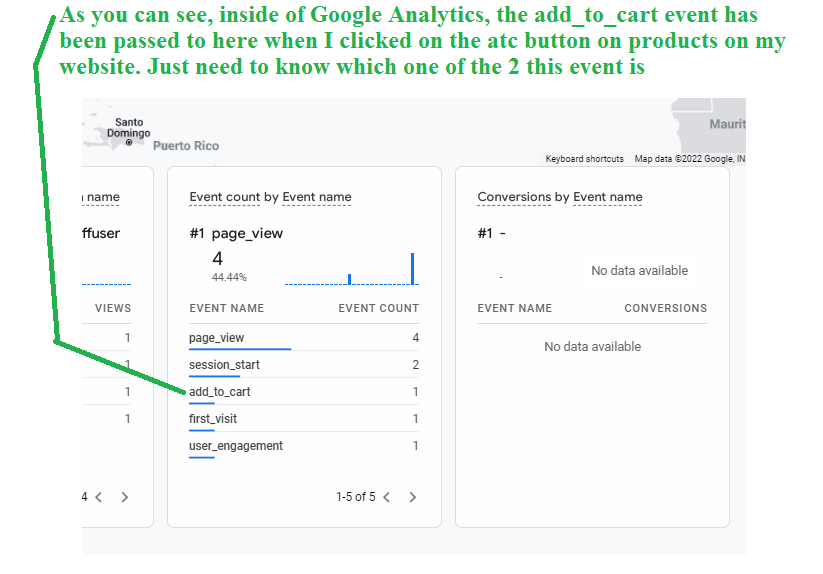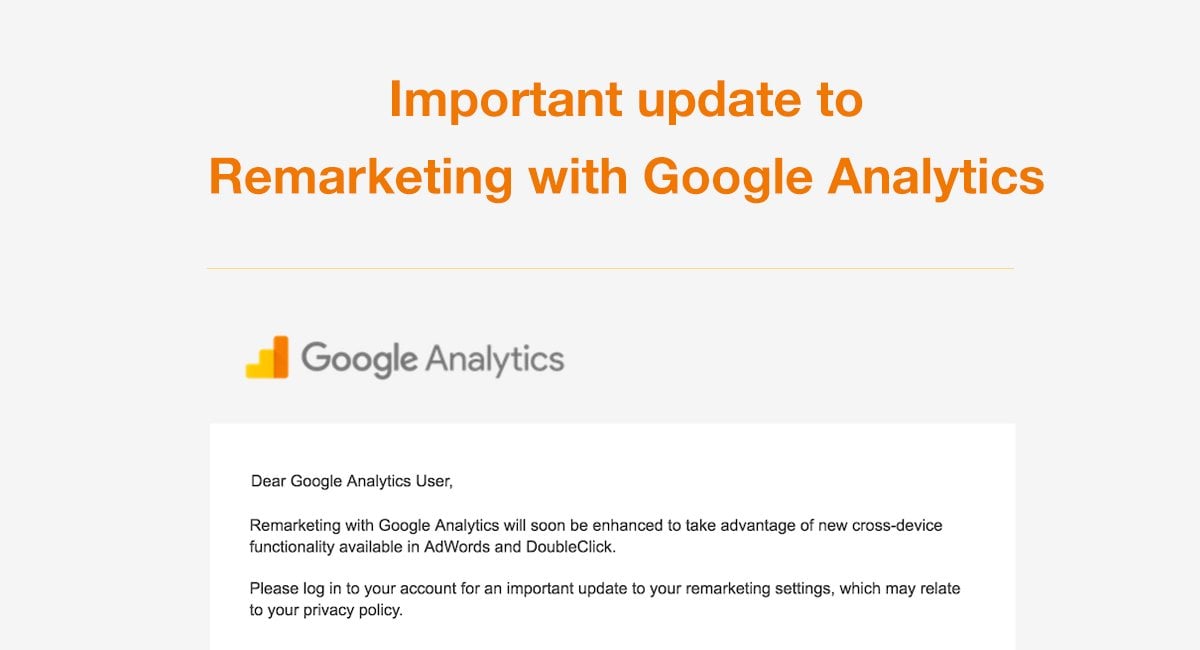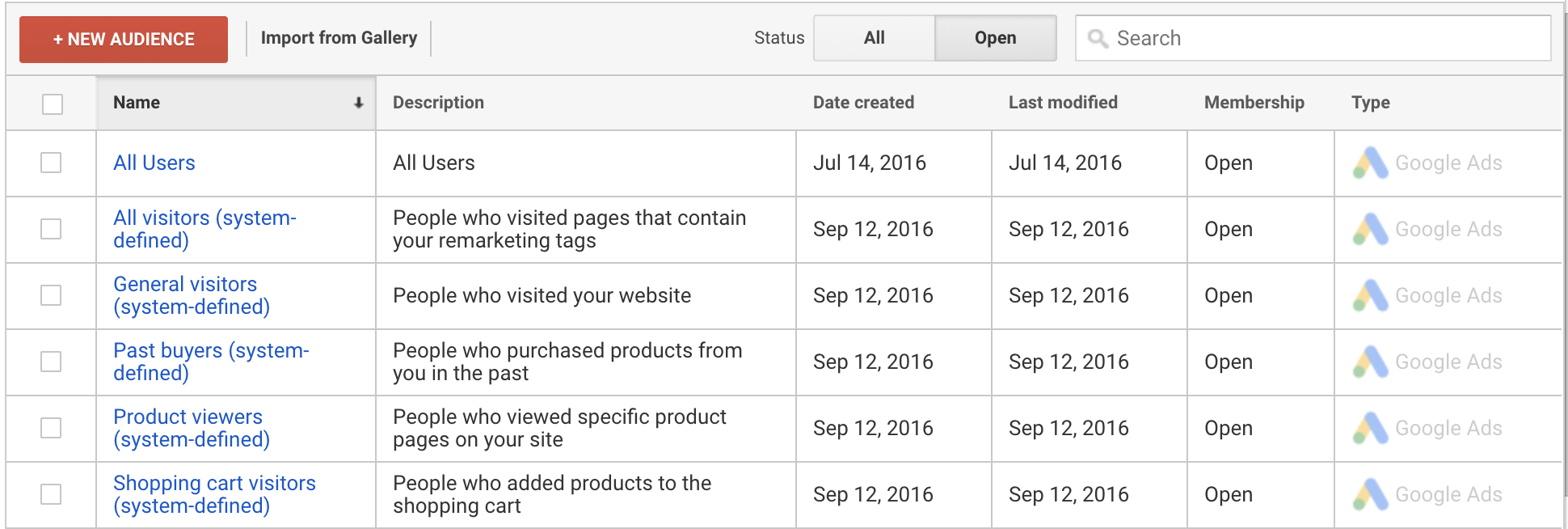Optimizing Your ROI with Remarketing In Google Analytics
Optimizing Your ROI with Remarketing In Google Analytics
Blog Article
Reliable Strategies for Remarketing in Google Analytics
In the realm of digital advertising, the realm of remarketing in Google Analytics stands as a critical device for businesses aiming to boost their on-line presence and conversion rates. Through critical target market segmentation, tailored remarketing checklists, and interesting ad creatives, businesses can craft tailored projects that resonate with their target market. Nonetheless, real success hinges on the capacity to continuously fine-tune and optimize these approaches based on efficiency metrics and information understandings. By discovering the nuances of dynamic remarketing and leveraging advanced tracking devices, businesses can unlock the complete potential of their remarketing initiatives, resulting in raised brand exposure and client engagement.
Audience Segmentation
Making use of target market division is a pivotal strategy in enhancing the efficiency of remarketing projects within Google Analytics. By dividing your audience right into distinct groups based on their behavior, demographics, or interests, you can tailor your marketing messages to be more relevant and engaging. This approach allows you to provide customized ads to particular sectors, raising the chance of conversion.

In addition, audience segmentation aids you comprehend the differing requirements and choices of different consumer teams, permitting you to craft more engaging advertisement creatives and deals. This targeted technique not just improves the effectiveness of your remarketing efforts yet also improves overall campaign efficiency.
Establishing Remarketing Lists
To efficiently apply remarketing techniques in Google Analytics, the preliminary step entails producing targeted remarketing checklists based on particular target market communications. Establishing up remarketing checklists allows marketing professionals to segment their web site visitors right into different categories based upon their behavior, such as web pages seen, products browsed for, or activities taken on the site. By defining these sectors, online marketers can after that produce appropriate and tailored advertisements that target these details teams, increasing the likelihood of conversion.
Remarketing listings can be set up making use of different requirements such as web page visits, period of visit, certain objective completions, or even certain events activated on the web site. This level of customization enables marketers to customize their advertisements to match the interests and choices of each fractional target market, causing greater engagement and conversion prices.
Furthermore, remarketing checklists can likewise be produced based on information imported from various other resources like CRM systems, permitting even more precise targeting. By establishing these targeted remarketing listings, marketers can effectively connect to possible clients that have actually already shown passion in their service or products, maximizing the effect of their remarketing campaigns.
Developing Compelling Ad Creatives
After segmenting web site site visitors into targeted remarketing checklists based upon details target market interactions, the next important step is to craft compelling advertisement creatives that resonate with each fractional group's choices and interests. The performance of remarketing projects heavily depends on official statement the capacity of these advertisement creatives to catch the focus of the audience and drive them to take the preferred action.
To produce compelling ad creatives, it is vital to understand the one-of-a-kind features of each segmented team (What Is “Remarketing” In Google Analytics?). Customizing the messaging, visuals, and offers to straighten with the interests and preferences of the target market can considerably increase the opportunities of conversion. Making use of dynamic ads that automatically change content based upon the user's habits can also enhance the customization of the advertisement experience

Monitoring Efficiency and Optimization
Effective tracking of campaign performance and constant optimization are important aspects of effective remarketing strategies in Google Analytics. To ensure the efficiency of remarketing projects, marketing professionals have to on a regular basis track vital performance metrics such as click-through rates, conversion prices, and return on ad invest. By keeping track of these metrics, marketing experts can gain useful understandings right into the efficiency of their campaigns and determine areas for renovation.
In Google Analytics, marketing experts can utilize tools like conversion tracking and target market division to evaluate pop over to this site the performance of their remarketing projects. Conversion monitoring permits online marketers to track certain activities that customers take after clicking on a remarketing ad, providing beneficial data on the performance of the campaign in driving preferred outcomes. Audience division, on the other hand, allows online marketers to split their target market into various sectors based on numerous standards such as demographics, habits, and interests, permitting more targeted and individualized remarketing initiatives.
Constant optimization is essential for making best use of the effect of remarketing campaigns. Marketing professionals must utilize A/B screening to trying out different ad creatives, messaging, and targeting techniques to determine one of the most reliable techniques. By routinely analyzing campaign performance information and making data-driven optimizations, marketers can guarantee that their remarketing campaigns are accomplishing the desired outcomes and driving conversions efficiently.
Leveraging Dynamic Remarketing
Utilizing dynamic remarketing can substantially improve the relevance and recommended you read effect of targeted advertisements in Google Analytics. This advanced method enables advertisers to reveal customized ads to customers who have previously seen their site or utilized their mobile app. By dynamically showing services or products that the users have actually revealed rate of interest in, dynamic remarketing helps to maintain the brand name fresh in their minds and urges them to go back to finish an acquisition.

Moreover, dynamic remarketing campaigns can be automated and optimized in real-time based upon efficiency information, ensuring that the ads remain appropriate and reliable. By leveraging vibrant remarketing in Google Analytics, marketers can produce extra impactful and targeted advertising and marketing projects that reverberate with their audience and drive results.
Final Thought
Finally, reliable remarketing strategies in Google Analytics entail audience division, targeted remarketing lists, compelling ad creatives, efficiency surveillance, and dynamic remarketing. By concentrating on tailored ads, information evaluation, and constant optimization, companies can boost conversion prices and drive interaction effectively. Leveraging tools like conversion monitoring makes certain that advertisements remain personalized and appropriate, leading to general success in remarketing efforts.
With tactical audience division, customized remarketing listings, and interesting ad creatives, services can craft tailored projects that resonate with their target audience. Using vibrant ads that immediately readjust content based on the individual's behavior can also boost the personalization of the advertisement experience.
Conversion monitoring permits marketers to track certain activities that individuals take after clicking on a remarketing advertisement, giving beneficial data on the performance of the campaign in driving preferred results.Utilizing vibrant remarketing can significantly improve the significance and impact of targeted advertisements in Google Analytics - What Is “Remarketing” In Google Analytics?.In verdict, efficient remarketing strategies in Google Analytics involve audience division, targeted remarketing checklists, engaging ad creatives, performance surveillance, and vibrant remarketing
Report this page